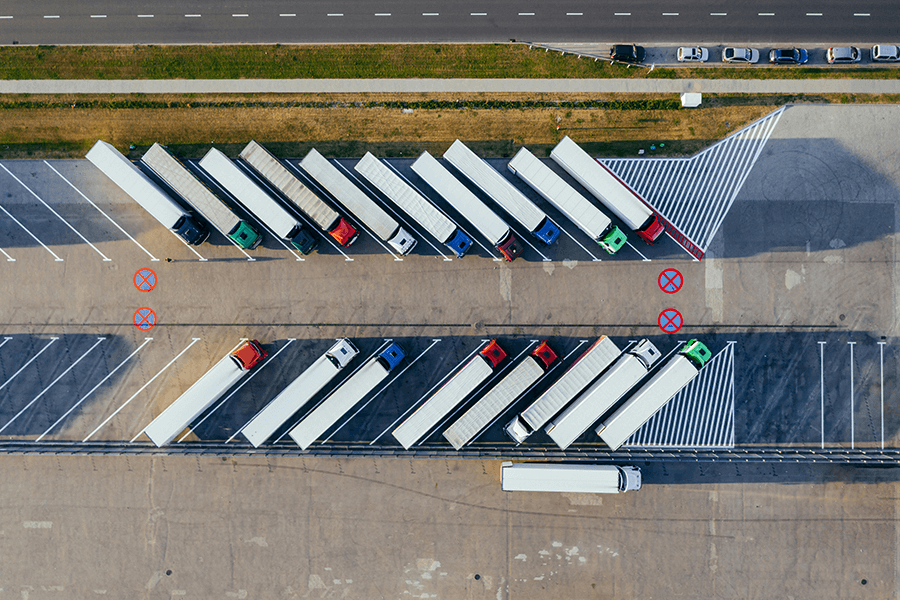Related Resources
Why It’s More Than Just Maps
Logistics isn’t just about moving goods from point A to point B. It’s a complex dance of time, resources, and efficiency, with fuel costs often leading the charge. With global fuel prices on a rollercoaster ride, businesses are feeling the pinch as transport budgets balloon. Furthermore, eco-friendly initiatives are not just a trend but a necessity. Optimizing routes can significantly cut down carbon emissions, aligning business operations with sustainability goals.
Route Optimization Algorithms- Behind the Scenes
Route optimization algorithms are the unsung heroes working tirelessly behind the scenes. These algorithms rely heavily on data—GPS coordinates, live traffic updates, and even weather conditions. Such data feeds into sophisticated calculation models designed to chart the best possible path.
Among these models, Dijkstra’s algorithm stands out for its simplicity in finding the shortest path, akin to a digital compass. However, as complexities arise, especially in urban traffic, predictive pathing using historical data becomes crucial. Machine learning takes it a step further, dynamically recalibrating routes in real-time. Imagine a scenario where traditional routing results in a 30-minute delivery delay during rush hour, whereas AI-optimized paths ensure timely arrivals.
AI-Enhanced Benefits- The “Why” for Business Leaders
AI not only streamlines delivery schedules but also cuts down idle time, turning potential downtime into valuable service hours.
For business leaders, the financial implications of AI-driven route optimization are persuasive. Cost savings manifest through reduced fuel usage and minimized vehicle wear and tear. Beyond dollars and cents, there’s an increase in productivity. AI not only streamlines delivery schedules but also cuts down idle time, turning potential downtime into valuable service hours.
Customer service also sees a marked improvement. On-time deliveries become the standard rather than the exception, fostering trust and loyalty among consumers. Consider a delivery company that adopted AI route optimization and saw its on-time delivery rate soar by 35%, transforming its customer satisfaction scores overnight.
Real-World Impact of Route Optimization
The practical applications of route optimization span across various sectors. In retail, especially last-mile delivery, AI-driven routing ensures packages reach doorsteps faster, meeting the modern consumer’s demand for instant gratification. Field service industries, like utilities and telecommunications, benefit by optimizing technician routes for efficient service calls.
Municipal services, such as waste management, leverage optimized routing to enhance efficiency. By minimizing travel times between stops, cities not only save on operational costs but also reduce their environmental footprint. Visualizing a city map with optimized waste collection routes illustrates just how effective these algorithms can be.
Implementation of Route Optimization in Your Business
Implementing route optimization is a structured process. It begins with assessing current routes and gathering data—think GPS traces and performance metrics. With this foundation, the next step involves selecting a technology stack that aligns with business needs, whether it includes real-time traffic monitoring or advanced predictive capabilities.
Integration is where the magic happens. Companies should test algorithms through pilot runs, gathering valuable feedback to fine-tune operations. Equally important is training teams. Drivers and dispatchers must be comfortable and confident with the new system, ensuring smooth adoption and long-term success.
Overcoming Common Hurdles in Route Optimization Implementation
Every technological implementation faces challenges, and route optimization is no different. High-quality data is paramount; real-time accuracy ensures algorithms function optimally. Change management plays a pivotal role in this transition, necessitating strategies to encourage buy-in from operational teams.
Financial considerations, too, are part of the equation. Businesses must weigh the costs of implementing new technology against prospective savings. Insights from industry experts often highlight the importance of patience and persistence in achieving positive ROI in the realm of route optimization.
The Future of Route Optimization
The future is bright for route optimization, with AI innovations leading the way. Predictive traffic models continue to evolve, leveraging machine learning to anticipate and adapt to shifting patterns. The integration of autonomous vehicles holds promise, potentially redefining logistics as we know it.
Eco-route planning is another frontier. Advances in AI are enabling businesses to prioritize environmentally friendly paths, balancing efficiency with sustainability. Industry trends point to a rapidly growing reliance on these technologies, forecasting a future where optimized routing is not just beneficial but essential.
To Conclude
Route optimization is more than a cost-cutting measure—it’s a strategic advantage. By enhancing operational efficiency, improving customer experience, and supporting sustainability efforts, AI-driven routing positions businesses for success in a competitive landscape. Leaders who recognize this potential and invest in optimization now will be well-equipped to lead their organizations into a more dynamic, efficient, and eco-conscious future.



